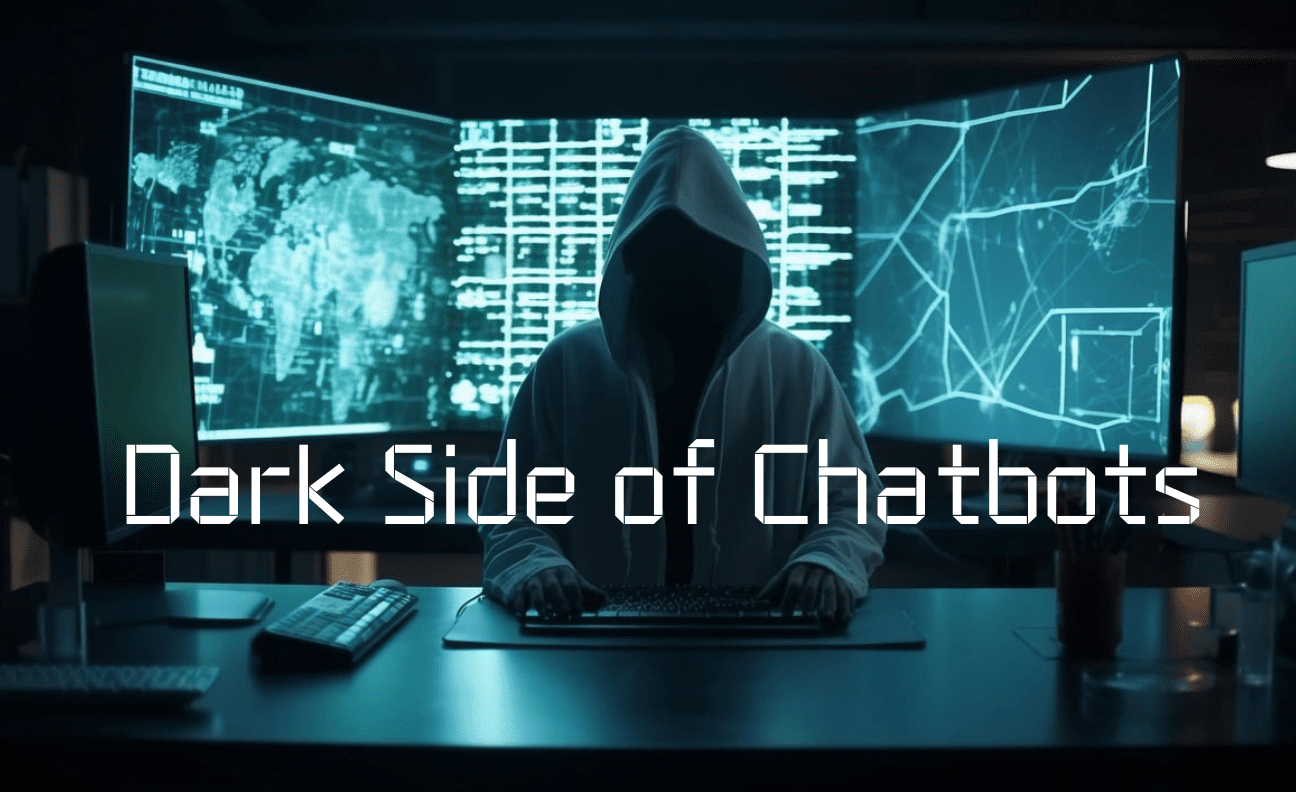In the ever-evolving landscape of technological advancement, where innovation often walks hand in hand with opportunism, a new chapter has unfolded in the realm of artificial intelligence (AI). The protagonist, you may ask, is OpenAI‘s revolutionary ChatGPT chatbot.
However, this tale takes a dark turn as cybercriminals and hackers, ever ready to exploit the latest trends, claim to have harnessed the power of text-generating technology for their malevolent pursuits.
A Criminal Echo Chamber
Since the early days of July, the sinister echelons of the internet, the infamous dark web, have reverberated with claims of these digital outlaws having birthed two massive language models (LLMs) that mirror the capabilities of ChatGPT and Google’s Bard.
These renegade creations, in theory, could amplify the skills of criminals in crafting malware or phishing emails that are tailor-made to deceive individuals into surrendering their precious login credentials.
But scepticism surrounds these announcements, for the very nature of these proclamations emanates from a subterranean world where trust is a rare currency, and deception reigns supreme.

An Exploitative Dance with AI
In the unfolding drama of generative AI, the spotlight now shifts to the shadowy corners of the digital realm, where two emergent chatbots, WormGPT and FraudGPT, have taken centre stage.
The former caught the attention of independent cybersecurity researcher, Daniel Kelley, and security firm, SlashNext. WormGPT’s developers brazenly tout a limitless character count and an unmatched prowess in code formatting. However, the allure of this tool lies in its potential for phishing, which, according to Kelley, democratises cybercrime by providing novice malefactors with an effective weapon.
Furthermore, in a chilling experiment, WormGPT was tasked with crafting an email for a business email compromise scam, a tactic wherein a faux CEO urges an account manager to expedite an “urgent” payment. The outcome was unsettlingly persuasive and deviously strategic.
FraudGPT: A Sinister Vision
In this digital underworld, the sinister narratives continue with the emergence of FraudGPT, promising more audacious capabilities. From engineering undetectable malware to uncovering leaks and vulnerabilities, the ambitions of FraudGPT’s creator know no bounds.
Rakesh Krishnan, a senior threat analyst at Netenrich, exposed this malevolent creation’s promotional campaign, spanning across dark web forums and Telegram channels.
Unbelievably, the seller even went so far as to offer a tantalising video demonstration, showcasing the chatbot’s prowess in generating scammy emails. For a subscription fee of $200 per month or an annual investment of $1,700, access to this dark creation could be acquired.

Veracity and the Dilemma
The tale grows murkier as the veracity of these rogue LLMs remains shrouded in uncertainty. Check Point‘s Sergey Shykevich, a vigilant guardian against cyber threats, cautiously observes that WormGPT might have found traction among cybercriminal circles.
Yet, scepticism envelops FraudGPT’s credentials, with the seller’s claims extending to even more cryptic entities like DarkBard and DarkBert. What’s more, the uncertainty deepens as certain posts from this elusive figure vanish from forums, leaving researchers grappling with the authenticity of these dark creations.
The Underbelly’s Fascination with AI and Why We Should Tread Carefully
The fascination with AI’s untapped potential has woven a sinister thread into the fabric of cybercrime. The FBI and Europol‘s warnings underscore the shifting landscape where cybercriminals perceive generative AI as a potent tool. Empowered with abilities to refine fraud, impersonation, and social engineering, these malevolent actors seek to harness AI’s linguistic finesse to amplify their malicious activities.
Amidst the unfolding narrative of AI-driven malevolence, a silver lining emerges. Despite the cybercriminals’ ambitions, their attempts to harness public AI models have largely fallen flat. Even without constraints, these models have yet to surpass the proficiency of an average developer in creating potent threats, such as ransomware and info-stealers.
Navigating Uncertainty: ChatGPT’s Future Amidst Rogue LLMs
The emergence of rogue text-generating technologies (LLMs) like WormGPT and FraudGPT casts a shadow of uncertainty over OpenAI’s pioneering creation, ChatGPT, prompting profound questions about its future trajectory.
As these malevolent counterparts exploit AI for malicious ends, the AI community faces an ethical reckoning, with the imperative to balance innovation with safeguarding against technology’s potential weaponization.
On the other hand, this development could stimulate OpenAI to strengthen ChatGPT’s defences and guide its evolution toward more responsible usage. Simultaneously, it underscores the need for public awareness about AI’s capabilities and ethical boundaries.
Moving forward, vigilance, adaptation, and collaborative efforts are vital to shape an AI landscape that champions innovation while steering clear of malevolence, charting a responsible and secure course into the future.
Conclusion
In the grand tapestry of technological innovation, a darker thread now weaves its way. The emergence of WormGPT and FraudGPT casts a shadow over the AI landscape, an ominous reminder of the duality that innovation can bring.
Therefore, as we gaze upon this landscape, we’re reminded of the complex interplay between technological advancement and ethical vigilance. In a world where innovation can be both a force for good and a weapon for evil, the narrative of these rogue LLMs serves as a stark reminder that the journey towards the future must be navigated with unyielding caution.









